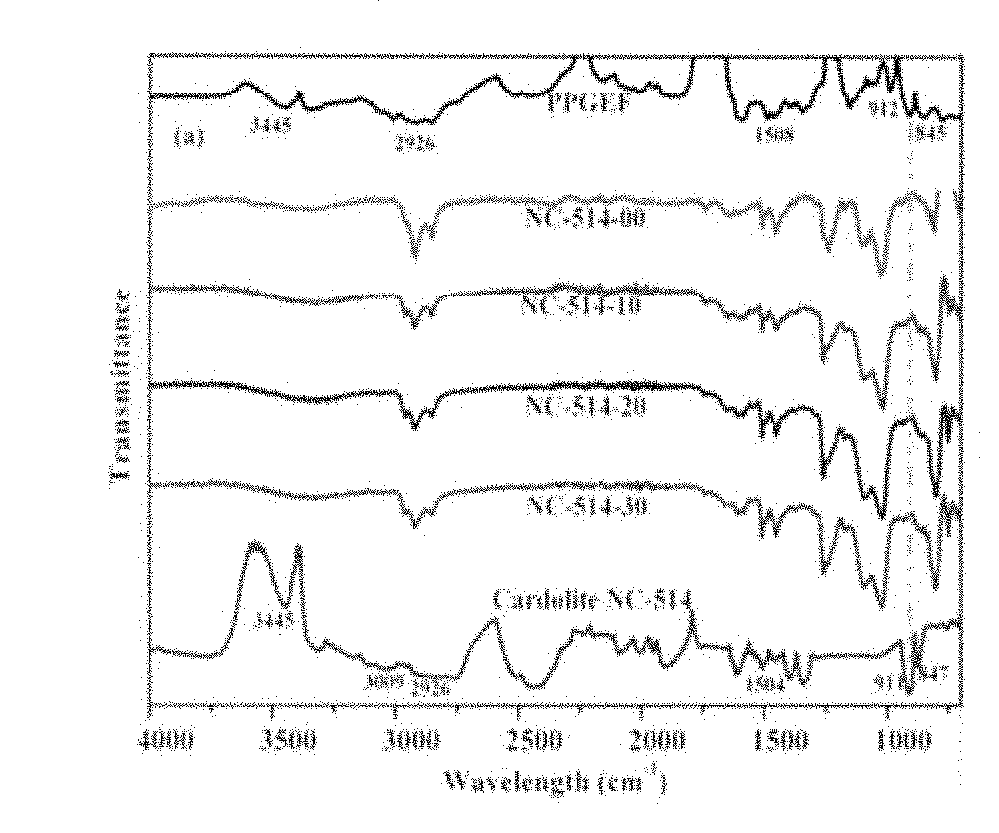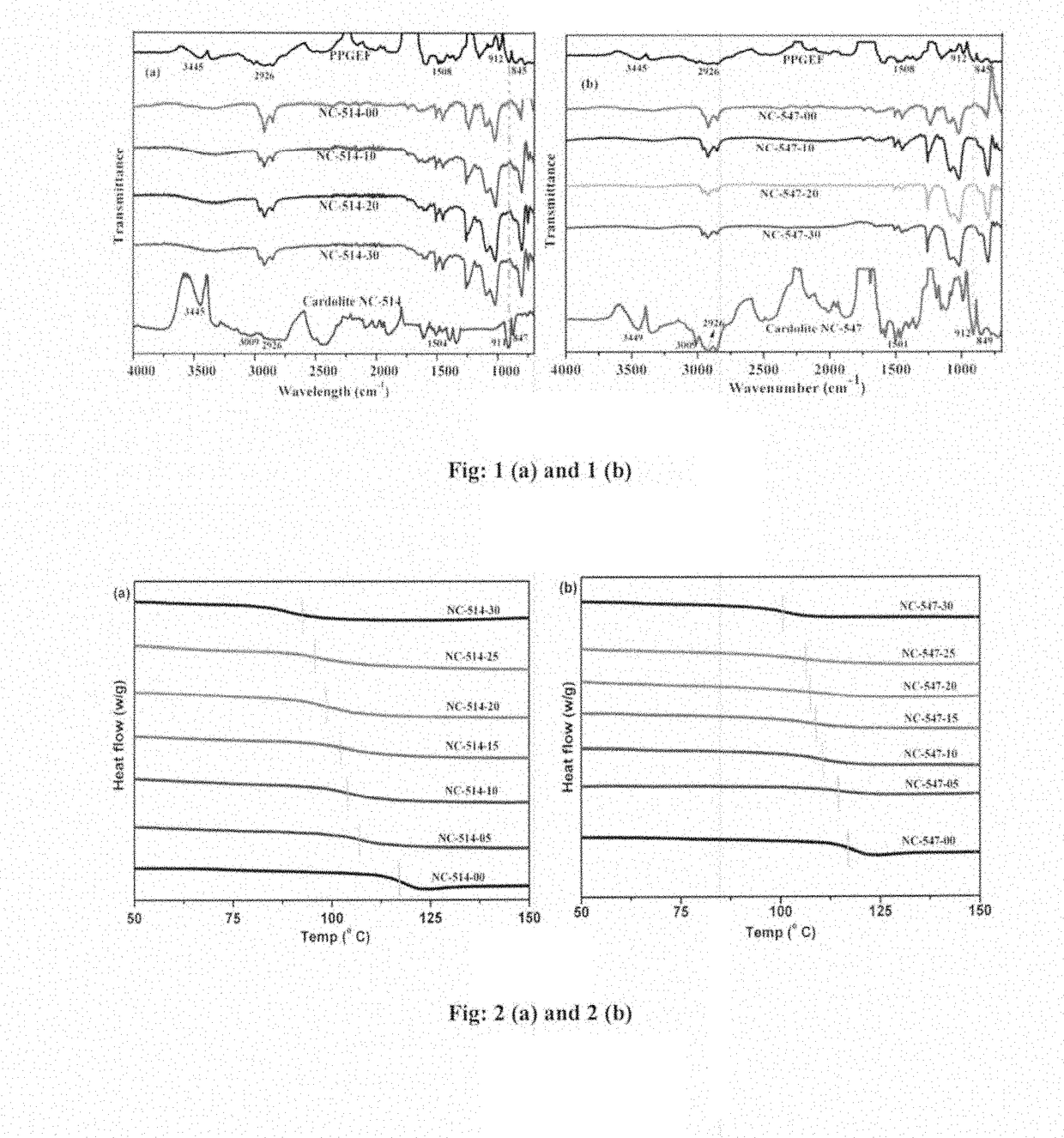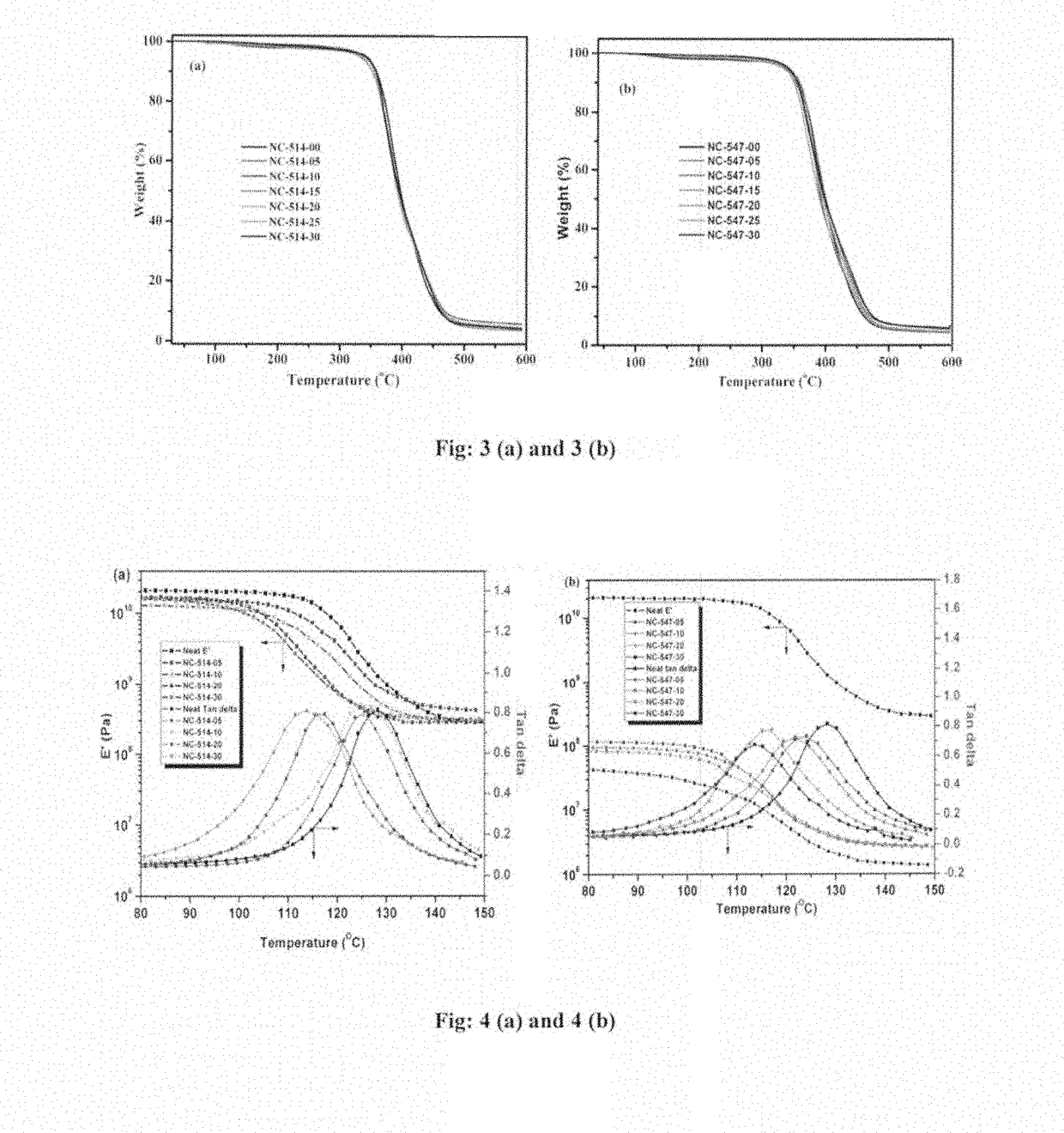Novel epoxy novolac composites
a composite and epoxy technology, applied in the field of new epoxy novolac composites, can solve the problems of reducing the tsub>g/sub>, tensile strength and modulus of the overall composite, and exhibiting inherent brittleness and low elongation upon curing
- Summary
- Abstract
- Description
- Claims
- Application Information
AI Technical Summary
Benefits of technology
Problems solved by technology
Method used
Image
Examples
example 1
on of Composites with Cardolite NC-514
[0084]Epoxy novolac composites were prepared by two step mixing process. Initially, PPGEF was mixed with Cardolite NC-514 in a beaker in different amounts ranging from 5-30% per hundred resins. To this mixture, a stoichiometric amount of BMCHA was added. The composite was thoroughly mixed and vacuum was applied to remove the entrapped air bubbles. All the mixing was performed at ambient temperature. It was then poured in greased PTFE mould following the cure schedule of 80° C. / 1 h and further 120° C. / 4 h. The mould was cooled and the cured specimens were taken out for further characterization. Similarly, epoxy novolac composites with Cardolite NC-514 were prepared by varying its content upto 30% per hundred PPGEF. The sample code for example is denoted as follows: NC-514-00 corresponds to the neat epoxy novolac composite. NC-514-05 corresponds to the composites containing 5% Cardolite etc.
(Composition)Sample codeNC-NC-NC-NC-NC-NC-514-514-514-514...
example 2
on of Composites with Cardolite NC-547
[0085]Epoxy novolac composites using Cardolite NC-547 were prepared in a similar way as described in example 1 by two step mixing process. Initially, PPGEF was mixed with Cardolite NC-547 in a beaker in different amounts ranging from 5-30% per hundred resin. To this mixture, a stoichiometric amount of BMCHA was added. The composite was thoroughly mixed and vacuum was applied to remove the entrapped air bubbles. All the mixing was performed at ambient temperature. It was then poured in greased PTFE mould following the cure schedule of 80° C. / 1 h and further 120° C. / 4 h. The mould was cooled and the cured specimens were taken out for further characterization. Similarly, epoxy novolac composites with Cardolite NC-547 were prepared by varying its content upto 30% per hundred PPGEF. The sample code for example is denoted as follows: NC-547-00 corresponds to the neat epoxy novolac composite. NC-547-05 corresponds to the composites containing 5% Cardol...
example 3
ization of Composites
[0086]A. Fourier Transform Infrared Spectroscopy (FT-IR):
[0087]FT-IR spectra of the composite films were recorded on a Perkin Elmer Spectrum GX FT-IR spectrometer in the range of 4000 to 750 cm−1 with a resolution of 4 cm−1. The measurements were performed in the ATR mode.
[0088]The FT-IR spectra of neat PPGEF, Cardolite NC-514, Cardolite NC-547 along with cured epoxy novolac composites containing different amounts of cardolites are shown in FIGS. 1(a) and 1(b). The neat PPGEF resin showed characteristic peaks at 912 cm−1 and 845 cm−1 which correspond to the oxirane rings. These oxirane ring peaks also appeared in neat Cardolite samples. The peak at 3445 cm−1 corresponds to the —OH groups of both neat PPGEF and cardolites. The C—C stretching of aromatic groups in all the samples appeared at 1608 cm−1.
[0089]The reaction between PPGEF with a curing agent BMCHA in presence of Cardolite resulted into disappearance of oxirane peaks at 912 cm−1 and 845 cm−1 from the ep...
PUM
| Property | Measurement | Unit |
|---|---|---|
| tensile strength | aaaaa | aaaaa |
| Tg | aaaaa | aaaaa |
| wt % | aaaaa | aaaaa |
Abstract
Description
Claims
Application Information
 Login to View More
Login to View More - R&D
- Intellectual Property
- Life Sciences
- Materials
- Tech Scout
- Unparalleled Data Quality
- Higher Quality Content
- 60% Fewer Hallucinations
Browse by: Latest US Patents, China's latest patents, Technical Efficacy Thesaurus, Application Domain, Technology Topic, Popular Technical Reports.
© 2025 PatSnap. All rights reserved.Legal|Privacy policy|Modern Slavery Act Transparency Statement|Sitemap|About US| Contact US: help@patsnap.com



